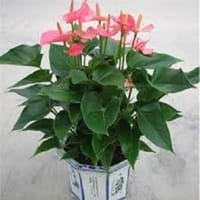Life Span
Annual and Perennial
Perennial
Type
Bulb or Corm or Tuber
Tender Perennial
Origin
Latin America and the Caribbean, Central America, Micronesia
Mexico, Latin America and the Caribbean, Central America, South America
Types
Hannah Yams, Japanese Sweet Potatoes
Not Available
Number of Varieties
Not Available
Habitat
Cold Regions, Tropical regions
gardens, Near ponds
USDA Hardiness Zone
11-12
10-11
AHS Heat Zone
12-1
12 - 1
Habit
Vining/Climbing
Spreading
Flower Color
Not Available
Not Available
Flower Color Modifier
Bicolor
Not Available
Fruit Color
Not Available
Not Available
Leaf Color in Spring
Green, Purple, Light Green, Chartreuse, Bronze
Green, Dark Green
Leaf Color in Summer
Light Green
Green, Dark Green
Leaf Color in Fall
Several shades of Green
Green, Dark Green
Leaf Color in Winter
Light Green
Green, Dark Green
Leaf Shape
Heart-shaped
Heart-shaped
Plant Season
Spring, Summer, Fall, Winter
Spring, Summer, Fall, Winter
Sunlight
Full Sun, Partial Sun
Partial Sun, Partial shade
Growth Rate
Very Fast
Fast
Type of Soil
Clay, Loam, Sand
Loam
The pH of Soil
Acidic, Neutral, Alkaline
Neutral
Soil Drainage
Well drained
Well drained
Bloom Time
Late Fall, Early Winter, Winter
Indeterminate
Tolerances
Drought
Drought
Where to Plant?
Ground, Pot
Ground, Pot
How to Plant?
Stem Cutting, Tuber propagation
Offsets, Seedlings
Plant Maintenance
Medium
Medium
Watering Requirements
Average Water Needs, Needs a lot of water initially
Keep ground moist, Requires consistently moist soil
In Summer
Lots of watering
Lots of watering
In Spring
Moderate
Moderate
In Winter
Average Water
Average Water
Soil pH
Acidic, Neutral, Alkaline
Neutral
Soil Type
Clay, Loam, Sand
Loam
Soil Drainage Capacity
Well drained
Well drained
Sun Exposure
Full Sun, Partial Sun
Partial Sun, Partial shade
Pruning
Remove damaged leaves, Remove dead branches, Remove dead leaves
Remove damaged leaves, Remove dead branches, Remove dead leaves
Fertilizers
All-Purpose Liquid Fertilizer
All-Purpose Liquid Fertilizer
Pests and Diseases
Aphids, Beetles, Leafminers, Red blotch
Aphids, Mealybugs, Soft scales
Plant Tolerance
Drought
Drought
Flower Petal Number
Single
Not Available
Foliage Texture
Coarse
Coarse
Foliage Sheen
Matte
Glossy
Attracts
Aphids, Beetles, Mites, white worms
Butterflies, Hummingbirds, Not Available
Allergy
Abdominal pain, Skin rash, Swelling, Vomiting
Toxic
Aesthetic Uses
Not Used For Aesthetic Purpose
Mixed Border, Ornamental use, Showy Purposes, Wild gardens
Beauty Benefits
Not Available
No Beauty Benefits
Environmental Uses
Air purification
Air purification
Medicinal Uses
Potassium, ß-carotene, Vitamin C
No Medicinal Use
Part of Plant Used
Leaves, Root, Shoots
Not Applicable
Other Uses
Used As Food, Used for its medicinal properties
Not Available
Used As Indoor Plant
Yes
No
Used As Outdoor Plant
Yes
Yes
Garden Design
Container, Edible, Groundcover, Hanging Basket, Herb / Vegetable, Mixed Border, Vine
Bedding Plant, Container, Cutflower, Foundation, Houseplant, Mixed Border, Tropical
Botanical Name
IPOMOEA batatas
ANTHURIUM andraeanum 'Otazu'
Common Name
Sweet Potato, Sweet Potato Vine
Flamingo Lily, Tailflower
In Hindi
शकरकंद
flamingo lily
In German
Süßkartoffel
flamingo lily
In French
Patate douce
flamingo lily
In Spanish
Batata
flamingo lily
In Greek
Γλυκοπατάτα
flamingo lily
In Portuguese
Batata doce
flamingo lily
In Polish
Słodki ziemniak
flamingo lily
In Latin
Dulcis SOLANUM TUBEROSUM
flamingo lily
Phylum
Magnoliophyta
Tracheobionta
Class
Magnoliopsida
Liliopsida
Family
Convolvulaceae
Araceae
Clade
Angiosperms, Asterids, Eudicots
Monocotyledonous
Tribe
Not Available
Not Available
Subfamily
Not Available
Not Available
Number of Species
Not Available
Properties of Sweet Potato and Flamingo Lily
Wondering what are the properties of Sweet Potato and Flamingo Lily? We provide you with everything About Sweet Potato and Flamingo Lily. Sweet Potato doesn't have thorns and Flamingo Lily doesn't have thorns. Also Sweet Potato does not have fragrant flowers. Sweet Potato has allergic reactions like Abdominal pain, Skin rash, Swelling and Vomiting and Flamingo Lily has allergic reactions like Abdominal pain, Skin rash, Swelling and Vomiting. Compare all the properties and characteristics of these two plants. Find out which of these plant can be used as indoor plant. If you are interested to decorate your house and garden, find out aesthetic uses, compare them and select the plant which will beautify your surrounding. Along with beautification, try comparing medicinal and edible uses of Sweet Potato and Flamingo Lily and you can choose the plant having best and most benefits.
Season and Care of Sweet Potato and Flamingo Lily
Season and care of Sweet Potato and Flamingo Lily is important to know. While considering everything about Sweet Potato and Flamingo Lily Care, growing season is an essential factor. Sweet Potato season is Spring, Summer, Fall and Winter and Flamingo Lily season is Spring, Summer, Fall and Winter. The type of soil for Sweet Potato is Clay, Loam, Sand and for Flamingo Lily is Loam while the PH of soil for Sweet Potato is Acidic, Neutral, Alkaline and for Flamingo Lily is Neutral.
Sweet Potato and Flamingo Lily Physical Information
Sweet Potato and Flamingo Lily physical information is very important for comparison. Sweet Potato height is 60.00 cm and width Not Available whereas Flamingo Lily height is 15.20 cm and width Not Available. The color specification of Sweet Potato and Flamingo Lily are as follows:
Sweet Potato flower color: Not Available
Sweet Potato leaf color: Green, Purple, Light Green, Chartreuse and Bronze
Flamingo Lily flower color: Not Available
- Flamingo Lily leaf color: Green and Dark Green
Care of Sweet Potato and Flamingo Lily
Care of Sweet Potato and Flamingo Lily include pruning, fertilizers, watering etc. Sweet Potato pruning is done Remove damaged leaves, Remove dead branches and Remove dead leaves and Flamingo Lily pruning is done Remove damaged leaves, Remove dead branches and Remove dead leaves. In summer Sweet Potato needs Lots of watering and in winter, it needs Average Water. Whereas, in summer Flamingo Lily needs Lots of watering and in winter, it needs Average Water.





